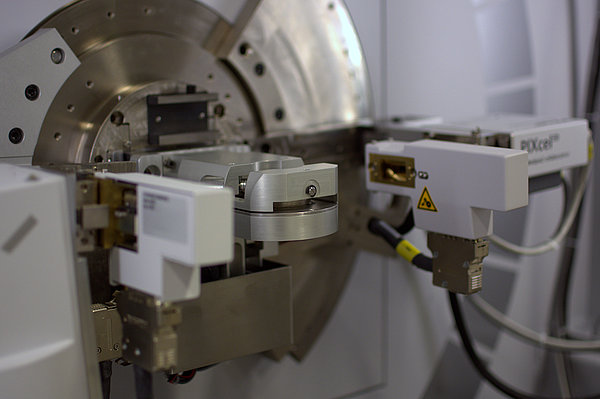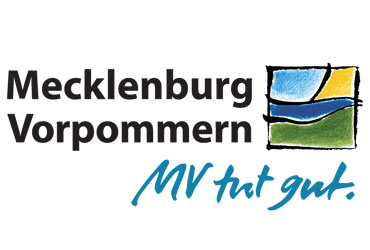X-ray Diffraction on Crystalline Materials
X-ray diffraction on crystalline materials offers various information’s about the specimen investigated. Being part of the solid-state analytics of the Leibniz-Institute for Catalysis e.V. we provide collection and analysis of X-ray diffraction data to gain detailed information about the structure of catalysts and other solid-state materials.
The following can be requested routinely:
- collection of diffraction data
- phase analysis (qualitatively and quantitatively)
- fundamental analysis of microstructure
Additionally, the analysis of heterogenous catalysts under working conditions, e.g. higher temperatures and/or presence of a reactive gas feed, is one of the topics we are focused on (non-ambient, in-situ-experiments). Beside these experiments and analysis of received data, we are working on further improvements of laboratory-based experimental possibilities e.g. method coupling or in-operando experiments.
- Online gas-feed analysis during in-situ diffraction-data collection to gain structure-activity relationships via mass spectrometry (Pfeiffer Vacuum GSD OmniStar)
- Enhancement of XRD-Raman-coupling was made possible by funding of the state of Mecklenburg-Western Pomerania as the sourcing of a Raman-spectrometer (Horiba SP550, fiber coupled) was realized by resources of European Union from the European Regional Development Fund (funding period 2014-2020)
For these purposes three powder diffractometer featuring four independently operating sites to collect powder diffraction data are available:
Stoe Stadi P, vertically mounted in transmission mode and operated either with with Mo Kα1- or Ag Kα1:
- X-radiation: Site (1): operated in Debye-Scherrer geometry suitable for the analysis of specimen mounted as flat sample (transmission) or in capillaries, Dectris Mythen2 1K detector
- Site (2): operated in Debye-Scherrer geometry, Dectris Mythen2 1K detector, Stoe ht2 in-situ heating chamber to investigate samples at temperatures up to 900 °C (routinely) under different atmospheres (inert, reductive, oxidative).
Panalytical X’Pert Pro (3) operated in Bragg-Brentano geometry:
- Cu-K-α1,2-radiation, X‘celerator detector, sample changer, usage of different optics possible (e.g. parallel beam)
- collection of SAXS scattering curves possible
Panalytical Empyrean (4) operated in Bragg-Brentano mode:
- Cu-K-α1,2 or Co-K-α1,2-radiation, Picxel3D detector
- mri TC basic oven to investigate specimen up to 1600 °C (inert conditions) as well as up to 800 °C under reactive gas feed
- Anton-Paar XRK-900 in-situ-chamber for investigations up to 900 °C and max. gas feed (inert, reactive) pressure of 10 bar
All diffraction data obtained are analyzed using the Panalytical HighScore Plus software package and different databases (ICDD pdf2, ICSD)
In case of totally unknown elemental composition of the samples, we offer additional X-ray fluorescence (XRF, Panalytical Epsilon 1) analysis in our laboratory.



